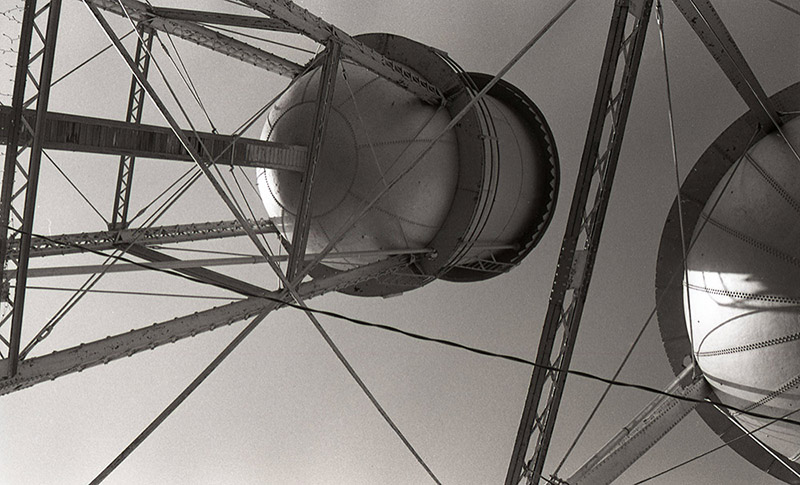Line
Lines are wonderful things. They lead the viewer’s eye around your photograph. And you can find them just about everywhere. So if you learn to concentrate on the appearance of lines in your images, you’ll have much greater influence on the viewer’s experience.

Nikon D7000, 73mm (28-80mm), 1/60, F/10, ISO 800
Lines can have all kinds of interesting visual effects. They can move straight from one point to another. They can curve around, moving smoothly through your composition. They can form patterns. They can also add a dose of chaos.

Lines are great for drawing the eye to a particular point in a photograph. In this example, the viewer will notice the subject’s face first (in part because humans are wired to notice faces and in part because she has an attention-worthy expression). But if the eye starts to wander, the lines formed by the ropes (and also by her legs) lead back to the original focal point.
Nikon D7000, 46mm (18-55mm), 1/400, F/10, ISO 100, cropped and adjusted
Line is also a key factor in vanishing point perspective. These railroad tracks are four feet and 8.5 inches apart, and they don’t ever get closer together. But as they near the horizon in this two-dimensional image, they appear to get closer and closer until they actually seem to meet. Thus lines help portray three dimensions when we only have two to work with.

Film
This is the same subject shot from a slightly different perspective. Note how your eye movement through the picture changes, and consider how this changes the feeling of the overall image.

Film

In this example, lines converge in a curving pattern toward the top. This tends to draw the eye upward. No matter where you start looking at it, your gaze will move up through the composition.
Film
Like the last photo, this shot has converging vertical lines. But here the upward sweep is disrupted by strong diagonals that tend to move your eye sideways through the picture. Thus the motion here isn’t as easy to predict.

Nikon D7000, 28mm (28-200mm), 1/50, F/3.8, ISO 800, adjusted

It’s easy to think of lines as being straight, but don’t forget that curved lines will also move the eye through the image. Here the curves of the grassy field create a flowing feeling that’s disrupted abruptly at the bottom. In this fight of curved line and straight pattern, the solitary subject emerges.
Film

At lower focal lengths, your lens may noticeably distort lines. This picture was taken with a fish-eye lens, which turns straight lines toward the edges into curves. Note the difference between the close end of the press boxes in the right-hand side of the shot, compared to the opposite end of the row toward the middle of the picture.
Nikon D3000, 10.5mm, 1/160, F/6.3, ISO 100

Nikon D3000, 10.5mm, 1/640, F/13, ISO 1600
Lines can also form patterns that don’t lead anywhere in particular. This shot has a lot of lines in it, but they don’t offer much obvious direction to the eye.

Film
Lines – even straight ones – can also create a sense of chaos. If this shot featured just one water tower and its simple, regular legs, it would feel a lot like some of the pictures from earlier in this set. But the second tower and wires going in several directions create a confusing scene. Your eye doesn’t really know where to go here. This isn’t necessarily a bad thing, if “chaos” is the feeling you want to convey. As with everything else in photography, it’s simply important to do what you do for a reason.
